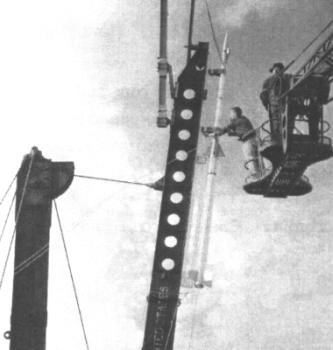Rocket Power Inc. Phoenix
In 1959, the Air Force Cambridge Research Lab (AFCRL) had a requirement for a two-stage solid-propellant sounding rocket to loft a 4.5 kg (10 lb) payload to an altitude of 300 km (1 million ft). It contracted the University of Michigan, which turned to the newly formed company Rocket Power Inc. (RPI) to build the rocket.
 |
| Photo: Richard T. Layman, via Morrow/Pines |
| Phoenix |
The Phoenix sounding rocket consisted of two stages (named Kiva and Hopi) built by RPI, which were each fitted with four tail fins. The first flight of the vehicle occurred on 21 June 1960 at the Naval Missile Test Center at Pt. Mugu. Within the next three years, the AFCRL launched at least nine additional Phoenix rockets. With a 4.5 kg (10 lb) payload, the vehicle could reach a maximum altitude of about 365 km (225 miles).
Specifications
Note: Data given by several sources show slight variations. Figures given below may therefore be inaccurate!
Data for Phoenix:
| Length | 5.50 m (18 ft 0.6 in) |
| Diameter | 1st stage: 16.5 cm (6.5 in) 2nd stage: 11.4 cm (4.5 in) |
| Weight | 150 kg (330 lb) |
| Speed | 9550 km/h (5930 mph) |
| Altitude | 365 km (225 miles) |
| Propulsion | 1st stage: RPI 5.5KS6100 Kiva solid-fueled rocket; 27 kN (6100 lb) for 5.5 s 2nd stage: RPI 3.0KS4000 Hopi solid-fueled rocket; 17.8 kN (4000 lb) for 3 s |
Main Sources
[1] Richard B. Morrow, Mitchell S. Pines: "Small Sounding Rockets", Small Rocket Press, 2000
[2] Jonathan McDowell: Launch Vehicles Database
Back to Directory of U.S. Military Rockets and Missiles, Appendix 4
Last Updated: 9 December 2005